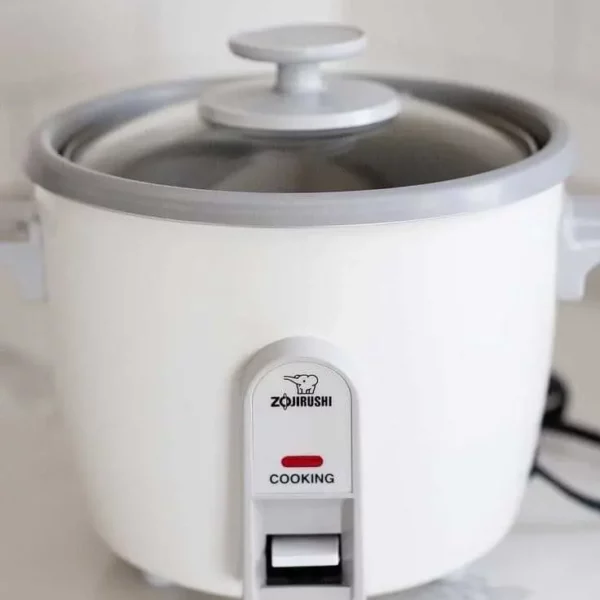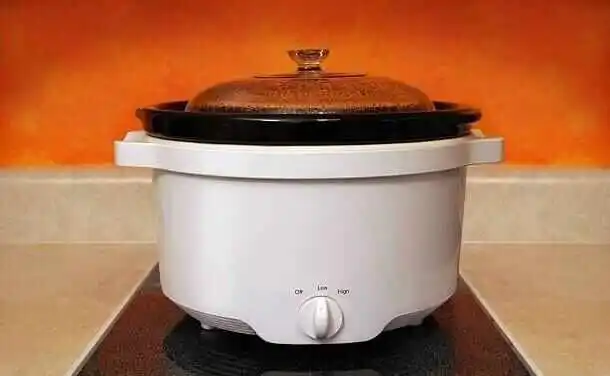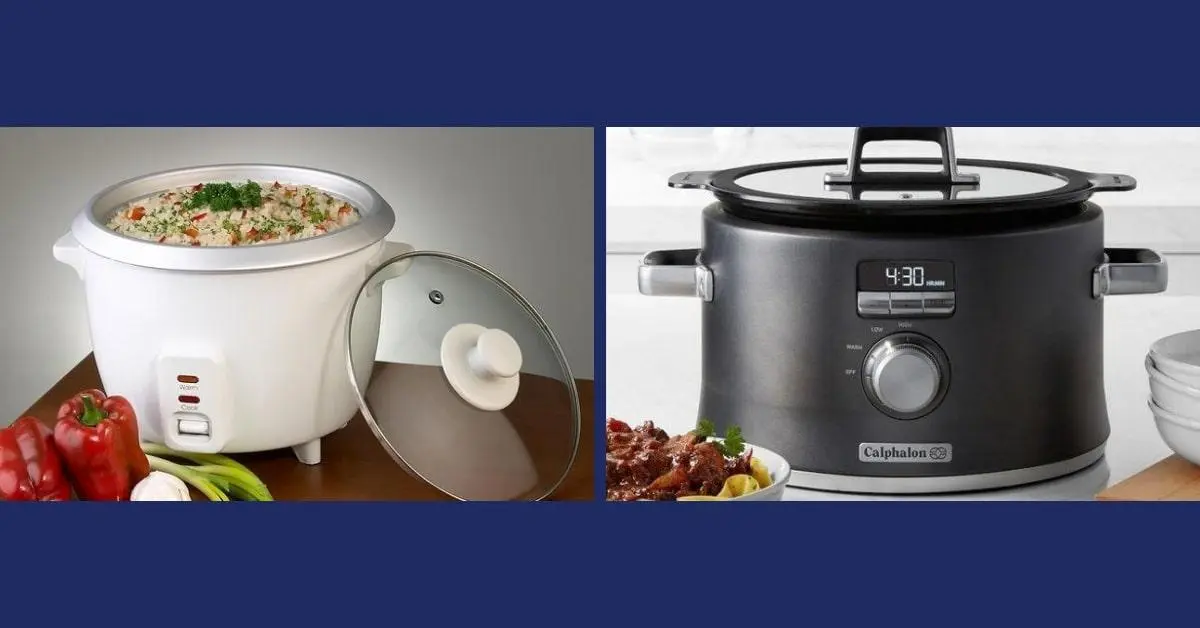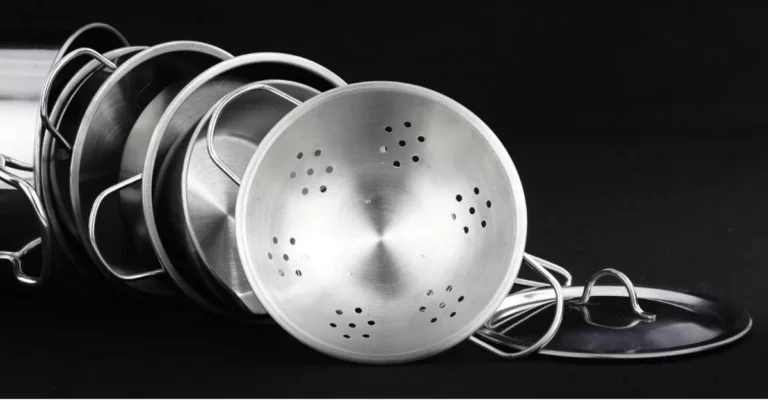Rice in Everyday Life
It serves as a primary carbohydrate source, providing energy, essential nutrients, and dietary fiber.
From aromatic basmati rice to sticky sushi rice, the diversity of rice varieties adds to the richness of culinary traditions across different cultures.
Recognizing the importance of rice as a staple food sets the stage for understanding the significance of the tool that has revolutionized rice cooking – the rice cooker.
Table of Contents
The Rice Cooker in Modern Kitchens
This multi-purpose kitchen gadget allows for precise control over cooking conditions, resulting in consistently fluffy and perfectly cooked rice with minimal effort.
Moreover, modern cookers come equipped with advanced features that extend their utility beyond grain, enabling users to prepare a variety of lentils, porridges, and even steam vegetables and meats.
The advent of intelligent microprocessors and innovative cooking algorithms has further elevated the capabilities of rice cookers, allowing them to adjust cooking parameters automatically for different types of rice.
By streamlining the cooking process and ensuring consistent results, rice cookers have become an essential tool in modern kitchens, catering to the needs of busy individuals and culinary professionals alike.
The Evolution of Cooking Techniques
These methods required close attention and skill to achieve desirable results. The introduction of electric rice cookers in the 20th century revolutionized cooking by providing a convenient and efficient alternative.
Early electric rice cookers utilized a simple on/off mechanism and relied on manual monitoring and estimation of cooking times.
However, as technology advanced gradually – the introduction of microcomputers and sophisticated sensors led to the development of more sophisticated rice cookers.
These modern appliances incorporate intelligent algorithms that optimize cooking parameters based on the specific type of rice, resulting in consistently delicious results.
The evolution of rice cooking techniques reflects the ongoing pursuit of culinary excellence, blending traditional practices with innovative tech to enhance the overall cooking experience.
Rice cookers stand as a testament to this evolution, embodying the fusion of tradition and modernity in the gastronomical world.
An Overview on How They Work
Understanding the basic functioning of rice cookers helps users make the most of this essential kitchen appliance, and make an informed choice on whether they need it for their kitchen needs.
The inner cooking pot, typically made of non-stick material, serves as the vessel where the rice and water are combined and cooked. Its design ensures even heat distribution and prevents rice from sticking to the surface, simplifying both cooking and cleaning processes.
The heating elements, usually located at the bottom of the rice cooker, generate and control the heat required for cooking.
To begin the cooking process, you need to measure the desired amount of rice and water and add them to the inner cooking pot. The rice cooker’s control panel allows users to select the desired cooking settings based on the type of rice and personal preferences.
Common settings include “white rice,” “brown rice,” “quick cook,” and “steam.”
Once you select your preferences from the control panel and turn on the rice cooker, the cooking begins. The heating elements heat the inner cooking pot, causing the water to boil. As the water reaches its boiling point, it is absorbed by the rice grains, allowing them to soften and cook.
During this phase, the rice cooker’s sensors and microprocessors work in tandem to monitor the temperature and moisture levels inside the pot.
Once the rice cooker detects that the rice has absorbed enough water and reached the desired level of doneness, it automatically switches from the cooking mode to the “keep warm” mode. This is somtimes also an option one can decide to turn on/off manually.
In this mode, the rice cooker maintains a consistent low heat, keeping the cooked rice warm and ready to serve for an extended period without overcooking or drying it out.
By automating the cooking process and providing precise control over cooking conditions, rice cookers ensure consistent results every time. This not only saves time and effort but also eliminates the guesswork associated with traditional stovetop cooking methods.
This streamlined approach simplifies rice cooking, and provides users the ability to maintain the grains at an optimal serving temperature. To add to this, the “Keep Warm” mode adds to the convenience and multi-functionality of rice cookers, making them an essential tool in modern kitchens.
When to use a Rice Cooker over a Slow Cooker

- If you have a strict budget for choosing between the two, then rice cookers are less expensive than slow cookers.
- If you feel you may not be too keen on learning how to work with a bunch of programmable options, then rice cookers have a gentle learning curve.
They do not come with too many presets or temperature settings as one may seldom need many choices for cooking rice. This will be easier to work with if you do not intend to explore a variety of dishes with the cooker. - If you are cramped for time, then a rice cooker will be better for you than a slow cooker.
Obviously, if you go by the name, the latter is used to cook food over prolonged periods of time. And that might be a tad bit inconvenient if you always function on a busy schedule. - If you do not want an electrical appliance to be running on its own while you’re off to work, then you probably do not want a slow cooker.
When to use a Slow Cooker over a Rice Cooker

- You should lean towards buying a slow cooker if you have plans to explore a variety of cuisines with this automated appliance.
If your breakfast and lunch options aren’t limited to only rice dishes then you should take a look at what slow cookers have to offer. - If there are no financial restrictions as far as your kitchen purchases go, then getting a slow cooker may work well for you.
As they are not only able to cook numerous dishes but also come with a larger number of presets and control settings for you to play around with.
Can they be used together?
Yes both of them can be used together.
Since slow cookers are mostly used to simmer food for long hours you can switch it on before going to work. When you return, you can always use a rice cooker to cook rice in 30 minutes to an hour and both your rice and stewed meat are ready to eat without much work in the kitchen.
When should they NOT be used together?
If rice does not form part of your staple diet, as they do in many Asian cultures – then you may not be able to get that much use out of it. You might as well use a slow cooker for cooking both rice and your proteins or vegetables.
It may take more time than you probably wished for, but spending more money on a brand new rice cooker when you won’t even be using it once in a couple of weeks at least, is not worth it.
Best Brands to Pick From
Japanese brands like Zojirushi, Panasonic and Tiger are well-known for their impeccable quality and design. They manufacture cookers of great quality that remain durable for years on end.
Some other notable manufacturers are Aroma, Hamilton Beach and Instant Pot. You can never go wrong if you pick from these brands as they give great value for money and are pretty efficient at what they do.
Slow cooker
The best known slow cooker brands include Hamilton Beach, Crockpot and Black and Decker. There are other great products from All Clad, Cuisinart and Ninja but the aforementioned ones will always prove to be reliable and give you optimum performance when it comes to slow cookers
Which option is best for you?

You will have to look at a few things that can only you can answer. Purpose, price and convenience.
If you want something to make cooking rice easier because it’s something you cook very frequently then go for a rice cooker.
But if you are looking to enjoy delicious slow cooked pot roast or stewed meat simmered over hours then of course, you should go for a slow cooker.
But there are also financial constraints to think of. Rice cookers come cheaper than slow cookers but do not offer as many heat settings and control options as slow cookers do.
Additionally, do any of these products make your life easier? Because slow cookers will cook for long periods on their own and if you are a busy person, that works. However, you will have to leave it running and you shouldn’t have to feel uncomfortable with that.
And if you do decide on a rice cooker, you can check out my post on how to pick the perfect rice cooker for your needs, and instructions on how to use it.
Happy cooking!




